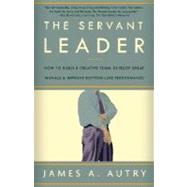
Note: Supplemental materials are not guaranteed with Rental or Used book purchases.
Purchase Benefits
What is included with this book?
| Acknowledgments | ix | ||||
| Foreword | xi | ||||
| Introduction | xvii | ||||
| PART ONE A Foundation of Character and Vision | 1 | (36) | |||
|
3 | (20) | |||
|
23 | (14) | |||
| PART TWO Servant Leader as Manager: The Everyday Nuts and Bolts | 37 | (62) | |||
|
41 | (8) | |||
|
49 | (8) | |||
|
57 | (20) | |||
|
77 | (22) | |||
| PART THREE The Harsh Realities of Organizational Life | 99 | (56) | |||
|
103 | (18) | |||
|
121 | (26) | |||
|
147 | (8) | |||
| PART FOUR Finding the Balance | 155 | (86) | |||
|
159 | (12) | |||
|
171 | (36) | |||
|
207 | (14) | |||
|
221 | (20) | |||
| Epilogue: Script for a Future Slide Show | 241 | (12) | |||
| Index | 253 |
The New copy of this book will include any supplemental materials advertised. Please check the title of the book to determine if it should include any access cards, study guides, lab manuals, CDs, etc.
The Used, Rental and eBook copies of this book are not guaranteed to include any supplemental materials. Typically, only the book itself is included. This is true even if the title states it includes any access cards, study guides, lab manuals, CDs, etc.
Excerpted from The Servant Leader: How to Build a Creative Team, Develop Great Morale, and Improve Bottom Line Performance by James A. Autry
All rights reserved by the original copyright owners. Excerpts are provided for display purposes only and may not be reproduced, reprinted or distributed without the written permission of the publisher.